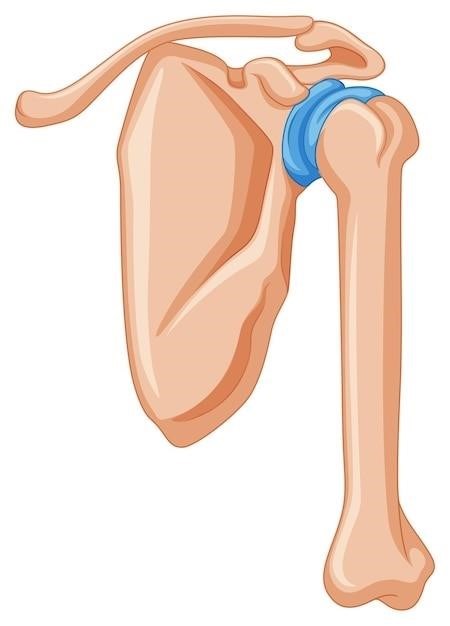Xactimate is a powerful tool for managing line item codes, essential for construction and restoration projects. These codes help organize tasks, materials, and labor, ensuring accurate estimates and efficient project management.
What is Xactimate?
Xactimate is a comprehensive software solution widely used in the construction and insurance industries for estimating and managing repair costs. It streamlines the process of creating detailed estimates by organizing materials, labor, and equipment into structured line item codes. These codes allow users to quickly identify and price specific tasks, ensuring accuracy and efficiency. Xactimate is popular among contractors, insurance adjusters, and restoration professionals who need to generate precise estimates for projects. The platform also supports project management by integrating estimating data with scheduling and billing tools. Its extensive library of line item codes, regularly updated to reflect current pricing and standards, makes it an indispensable tool for professionals seeking to optimize their workflows. By standardizing the estimation process, Xactimate helps reduce errors and enhances collaboration among stakeholders.
The Importance of Line Item Codes in Xactimate
Line item codes are a fundamental component of Xactimate, playing a critical role in streamlining project estimation and management. These codes enable users to categorize and track specific tasks, materials, and labor costs with precision, ensuring that estimates are accurate and comprehensive. Without line item codes, managing complex projects would become disorganized, leading to potential errors and oversights. They provide a standardized way to break down projects into manageable components, making it easier to allocate resources and monitor progress. Additionally, line item codes enhance transparency and accountability by allowing stakeholders to clearly see how costs are distributed. This level of detail is essential for ensuring that projects are completed on time and within budget. By organizing data effectively, line item codes help professionals avoid misunderstandings and discrepancies, making them indispensable for efficient project execution.
Benefits of Using Xactimate Line Item Codes
Using Xactimate line item codes offers numerous advantages for professionals in construction and restoration industries. These codes streamline the estimation process by standardizing tasks, materials, and labor, ensuring consistency across projects. They enable quick access to detailed cost breakdowns, reducing the time spent on manual calculations. With line item codes, users can generate accurate and professional estimates, which helps in securing client approvals faster. Additionally, these codes facilitate better project organization, allowing teams to track progress and identify potential cost overruns early. They also improve collaboration by providing a clear and universal language for all stakeholders involved. Moreover, line item codes enhance reporting capabilities, making it easier to analyze project performance and make data-driven decisions. By leveraging these codes, users can increase efficiency, reduce errors, and deliver projects more effectively, ultimately leading to higher client satisfaction and a stronger professional reputation.

Understanding Xactimate Line Item Codes
Xactimate line item codes are standardized identifiers for tasks, materials, and labor in construction projects. They are organized into categories like roofing, plumbing, and drywall, ensuring consistency and accuracy in estimates.
Structure and Organization of Line Item Codes
Xactimate line item codes are organized into a hierarchical structure, making it easy to navigate and assign specific tasks, materials, and labor. Codes are grouped into broad categories, such as Roofing, Drywall, and Plumbing, with further subcategories for more detailed tasks. Each code consists of a combination of letters and numbers, where the prefix often indicates the category, and the suffix specifies the item or service. For example, ROOF-001 might represent a roofing material, while DRYW-002 could denote a drywall repair task. This system ensures consistency and accuracy in estimates, allowing users to quickly locate and assign the correct codes. The structure also supports efficient project management by standardizing how items are documented and billed.
Categories and Subcategories in Xactimate
In Xactimate, line item codes are organized into comprehensive categories and subcategories, ensuring a logical and user-friendly system. Categories represent broad groups of tasks or materials, such as Roofing, Drywall, or Plumbing, while subcategories further break these down into specific tasks or items. For instance, under the Roofing category, subcategories might include Repairs, Installations, or Materials. This hierarchical structure allows users to quickly locate and assign the most relevant codes for their projects. The categorization system enhances efficiency by grouping related tasks together, reducing the time spent searching for individual codes. Additionally, this organization helps maintain consistency across estimates and projects, making it easier for professionals to understand and manage their work.
Common Examples of Line Item Codes

Line item codes in Xactimate are standardized identifiers for specific tasks, materials, and services. Common examples include codes for roofing materials and labor, such as ROOFSHINGLEREMOVE for shingle removal or ROOFASPHALTSHINGLEINSTALL for installing asphalt shingles. For drywall work, codes like DRYWALLREPAIR or DRYWALLFINISH are frequently used. Plumbing tasks might use codes like PLUMBINGPIPEINSPECTION or FIXTUREINSTALLATION. Electrical work often includes codes such as ELECOUTLETR for outlet installations. Painting tasks might involve PAINTWALLAPPLY for wall painting or PAINTCEILING for ceiling painting. These codes streamline the estimation process by providing clear, predefined entries for common project elements, ensuring consistency and accuracy across estimates and invoices.

How to Use Xactimate Line Item Codes Effectively
Effectively using Xactimate line item codes involves accessing them via the estimate items section, organizing by categories, and applying to specific projects for accurate, efficient estimates and streamlined billing processes.
Steps to Access Line Item Codes in Xactimate
To access line item codes in Xactimate, start by opening the software and selecting a project. Navigate to the pricelist option and choose or download the appropriate list for your project. Once the pricelist is loaded, press Ctrl + E or click on Estimate Items from the menu to view the line item codes. This will open a comprehensive library of codes organized by categories such as Demolition, Structural Repair, and Drywall. Use the search function or expand categories to find specific codes. Select the desired code and add it to your estimate by clicking Add Item. For detailed guidance, refer to the sample Xactimate line item codes list PDF, which provides a structured overview of the process and code organization.
Best Practices for Assigning Line Item Codes
Assigning line item codes in Xactimate requires a systematic approach to ensure accuracy and consistency. Start by understanding the category structure, such as Roofing, Drywall, and Plumbing, and use their respective subcategories. Always verify the code’s description matches the item or service, avoiding generic or incorrect codes. Use standardized naming conventions, like prefixes for materials or labor, to enhance clarity. Regularly review and update codes to reflect project changes or new requirements. Maintain a documentation list explaining each code for team reference. Train your team to use codes consistently and integrate them with other tools for seamless workflow management. Refer to the sample Xactimate line item codes list PDF for guidance on organizing and assigning codes effectively.
Customizing Line Item Codes for Specific Projects

Customizing line item codes in Xactimate ensures precision and relevance for specific projects. Begin by reviewing the existing line item codes list and identifying gaps or unique requirements. Create new codes by duplicating and modifying existing ones, ensuring they align with project needs. Use clear, descriptive naming conventions to avoid confusion. Organize codes into custom categories or subcategories, such as Roofing Repairs or Drywall Installation, to streamline access. Leverage templates for recurring projects to save time and maintain consistency. Regularly update codes to reflect new materials, labor costs, or techniques. For complex projects, export and import customized codes using the sample Xactimate line item codes list PDF as a reference. This ensures flexibility and accuracy, making your estimates and reports more reliable and tailored to the job at hand.
Popular Categories and Their Codes
Popular categories in Xactimate include Roofing (e.g., shingles, underlayment), Drywall (e.g., installation, finishing), and Plumbing (e.g., pipes, fixtures). Each category has specific codes for accurate estimation and project management.
Roofing and Siding Codes
Roofing and siding codes in Xactimate are essential for accurate estimates in construction and restoration projects. Common roofing codes include ROOFSHNG for shingles, ROOFUNDL for underlayment, and ROOFVAL for valley materials. Siding codes like SIDVINYL for vinyl siding and SIDALUM for aluminum siding are frequently used. These codes help differentiate materials and labor costs, ensuring precise billing and project tracking. Additional codes for gutters, downspouts, and flashing are also available, such as GUTTERS and FLASH. By organizing these codes, professionals can streamline estimates and enhance project efficiency. These categories are crucial for contractors and insurers to manage roofing and siding repairs effectively.
Drywall and Painting Codes

Drywall and painting codes in Xactimate are essential for accurately estimating and managing interior finishing tasks. Common drywall codes include DRYWALL for installation, DRYWALLFIN for finishing, and DRYWALLREPAIR for repairs. Painting codes like PAINTR for painting walls and PAINTRTRIM for trim work are widely used. These codes help differentiate between materials, labor, and specific tasks, ensuring precise cost breakdowns. Additional codes for textures, priming, and coatings are also available, such as TEXTURE and PRIMER. By organizing these codes, professionals can efficiently manage drywall and painting projects, reducing errors and enhancing collaboration. These codes are vital for contractors, insurers, and project managers to streamline estimates and ensure accurate billing. They also facilitate compliance with industry standards and simplify the documentation process for insurance claims and client approvals.

Plumbing and Electrical Codes
Plumbing and electrical codes in Xactimate are crucial for accurately estimating and managing specialized tasks in construction and restoration projects. Plumbing codes include items like PLUMBINGFIXTURES for installing fixtures and PLUMBINGPIPE for piping systems. Electrical codes cover tasks such as ELECTRICALWIRING for wiring installations and ELECTRICALLIGHTING for lighting fixtures. These codes help professionals track materials, labor, and specific services, ensuring precise cost calculations. Additional codes address repairs, such as PLUMBINGREPAIR for leak fixes or ELECTRICALOUTLET for outlet installations. By using these codes, contractors and insurers can streamline estimates, reduce errors, and improve project transparency. They also facilitate compliance with industry standards and simplify documentation for insurance claims and client approvals. These codes are essential for efficient project management and accurate billing in plumbing and electrical work.

Advanced Features of Xactimate Line Item Codes
Xactimate line item codes offer advanced tracking and integration features, enabling precise cost estimation and project management. They enhance reporting accuracy and streamline workflows by connecting with other construction management tools seamlessly.
Using Line Item Codes for Estimating and Billing
Xactimate line item codes are crucial for precise estimating and billing, enabling users to break down projects into detailed components. Each code represents specific materials, labor, or services, ensuring accurate cost calculations. By assigning these codes, professionals can generate comprehensive estimates, track expenses, and manage project budgets effectively. The system also allows for seamless integration with billing software, making it easier to create invoices and monitor financial progress; This feature enhances transparency and reduces errors, ensuring that all project costs are accounted for. Additionally, line item codes facilitate quick adjustments to estimates, enabling real-time financial planning. Their use streamlines the entire billing process, making it more efficient and reliable for contractors and clients alike. This level of detail ensures that financial aspects of projects are handled with precision and clarity.
Integrating Line Item Codes with Other Tools
Xactimate line item codes can be seamlessly integrated with other software and tools, enhancing workflow efficiency. This integration allows users to import and export data, ensuring consistency across platforms. For instance, line item codes can be synced with accounting systems like QuickBooks or project management tools such as Trello, streamlining financial and operational tasks. Additionally, integrating these codes with time-tracking or CRM software enables better project oversight and client communication. This compatibility reduces manual data entry and minimizes errors, saving time and resources. Many professionals use these codes in conjunction with third-party apps to automate reporting and billing processes. The ability to integrate line item codes with other tools makes Xactimate a versatile solution for comprehensive project management. This feature is particularly beneficial for large-scale projects requiring collaboration across multiple teams and systems.

Sample Xactimate Line Item Codes List
This section offers a sample list of Xactimate line item codes for categories like roofing, siding, gutters, and drywall, aiding in precise and consistent project estimates.

Sample PDF Template for Line Item Codes
A sample PDF template for Xactimate line item codes provides a structured format for organizing and referencing codes. It typically includes categories like roofing, siding, and drywall, with corresponding codes and descriptions. The template may feature columns for line item numbers, descriptions, and pricing, making it easy to generate accurate estimates. Users can download and customize these templates to suit specific project needs, ensuring consistency across estimates. The PDF format allows for easy sharing and printing, making it a practical tool for contractors and project managers. By using a standardized template, professionals can streamline their workflow and reduce errors in project costing and management. This resource is particularly useful for those new to Xactimate, offering a clear and organized way to implement line item codes effectively.
Final Thoughts on Xactimate Line Item Codes
Future of Xactimate and Line Item Codes
The future of Xactimate and its line item codes is poised for growth, driven by advancements in technology and the increasing demand for precise project management tools. As the construction and insurance industries evolve, Xactimate is expected to integrate more advanced features, such as artificial intelligence and real-time data analytics, to enhance estimating accuracy. Cloud-based accessibility will likely improve collaboration among stakeholders, enabling teams to work seamlessly across locations. Additionally, the development of more customizable line item codes will cater to niche industries and specific project requirements. Sustainability is another area where Xactimate may expand, incorporating codes for eco-friendly materials and energy-efficient practices. Overall, Xactimate’s line item codes will continue to be a cornerstone of modern project management, adapting to industry needs while maintaining their core functionality of streamlining processes and improving outcomes.


